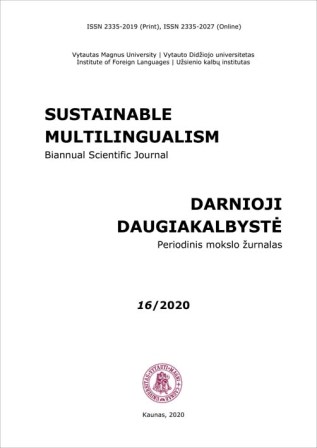Integration of creativity-developing activities in foreign language learning: students’ attitude
Integration of creativity-developing activities in foreign language learning: students’ attitude
Author(s): Liudmila Dulksnienė, Nemira MačianskienėSubject(s): Education, Foreign languages learning, Language acquisition, Pragmatics, Comparative Linguistics, Sociolinguistics
Published by: Vytauto Didžiojo Universitetas
Keywords: communicative competence; creativity; application of creativity-developing elements, foreign language teaching; student; teacher;
Summary/Abstract: The increasing significance of science and more intensive cooperation with foreign partners have created demands for plurilingual specialists, capable of providing solid research-based solutions, able to read the most advanced professional literature in a foreign language, participate in international conferences with foreign partners, negotiate and cooperate in scientific and subject-oriented activity while freely communicating in several foreign languages. However, in the case of specialized higher education institutions, such as medical or agricultural universities, foreign language learning is often oriented to the learning of occupational terminology; whereas acquisition of plurilingual communicative competence is much more than linguistic competence, it is a multifaceted competence and its acquisition can be enhanced by integrating creativity-developing activities into the program curricula. The aim of the study was to reveal the students’ attitude towards the integration of creativity development when studying foreign languages at a higher education institution. The generalized results of the study suggest that even though students considered linguistic competence (vocabulary and grammar) to be most important in language learning, yet they valued the acquisition of socio-cultural competence as important in communicating cross-culturally. The students’ attitude to the application of the elements of art in foreign language classes was positive, as these elements increased their interest and motivation in learning; integration of drawing and creation activities facilitated communication; the assignments became motivating and useful when communicating on intercultural topics. The students also positively evaluated the teacher’s work, the teacher’s assistance and positive approach to the evaluation of application of the elements of art by the students, which was the key element in the success of such classes. [...]
Journal: Darnioji daugiakalbystė
- Issue Year: 2020
- Issue No: 16
- Page Range: 65-90
- Page Count: 26
- Language: English

